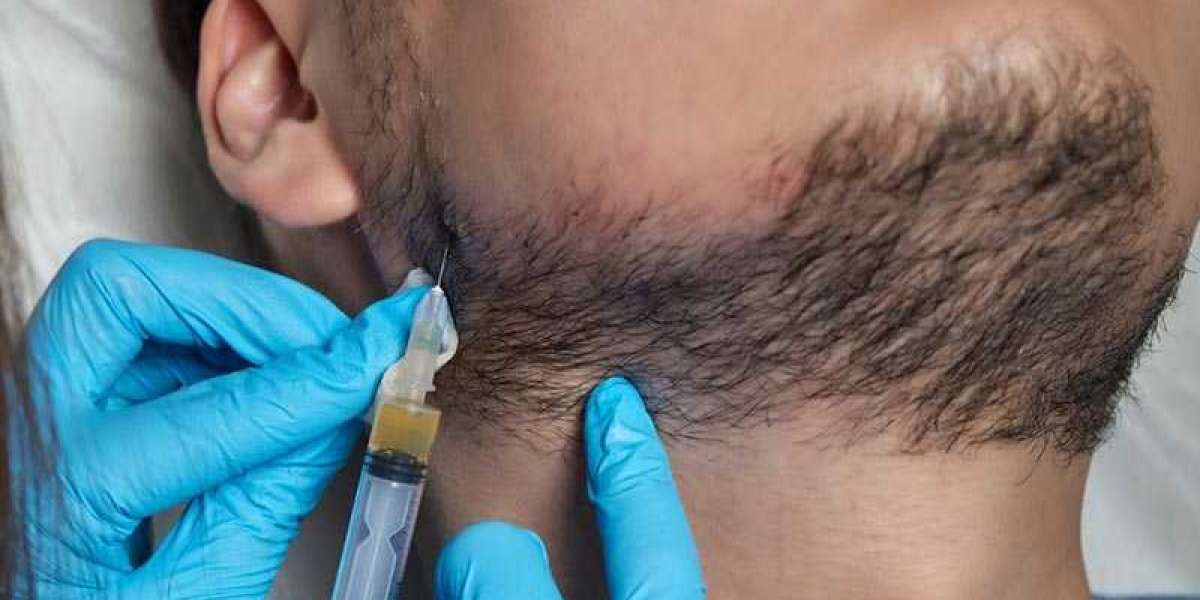A common concern for individuals considering a beard hair transplant is the level of pain associated with the procedure. While any surgical procedure carries some discomfort, the pain involved in a beard transplant is typically manageable. Understanding what to expect during and after the procedure can help you feel more comfortable and prepared. In this article, we’ll break down the pain levels associated with a Beard Hair Transplant(زراعة شعر الذقن), the anesthesia used, and the post-procedure recovery process.
The Procedure and Pain Levels During a Beard Hair Transplant:
A beard hair transplant is a minimally invasive procedure that involves transplanting hair follicles from a donor area (usually the scalp) to the beard area. During the procedure, local anesthesia is applied to numb the treatment area, ensuring that the patient feels little to no pain.
Local anesthesia: The anesthesia ensures that you will not feel any pain during the transplant process. Most patients report feeling some pressure or minor discomfort, but no sharp pain.
Donor area: The area from which hair follicles are harvested will be numbed, so you won’t feel anything while the hair is being extracted.
Transplant site: Similarly, the beard area will be numbed, and you will not experience pain as the follicles are inserted.
While you may not feel pain during the procedure itself, some patients report mild discomfort or a tingling sensation afterward, which is normal.
How Painful Is the Recovery Period?
After the beard hair transplant procedure, some mild discomfort is common, but it is typically manageable with over-the-counter pain relievers. The extent of discomfort will vary from person to person, but most patients experience only minimal pain during recovery.
Swelling and tenderness: You may notice some swelling around the transplanted area, which can cause mild tenderness. This is temporary and should subside within a few days.
Soreness: The donor area (usually the back of the scalp) might feel sore as it heals, but this discomfort is generally mild and can be alleviated with pain medication prescribed by your surgeon.
Redness and scabbing: The transplanted areas may have redness and small scabs as the follicles settle in, but this is a normal part of the healing process and is not usually painful.
By following the post-care instructions given by your surgeon, you can minimize pain and discomfort during the recovery process.
Managing Pain During a Beard Hair Transplant:
One of the main factors in how painful a beard hair transplant will be is the skill of the surgeon and the techniques used. A skilled surgeon will ensure that the procedure is as comfortable as possible.
Sedation options: For patients who are highly sensitive to pain or have anxiety about the procedure, sedation options can be discussed to help ease the experience.
Topical numbing creams: These may be used in addition to local anesthesia to ensure that you feel no pain during the procedure.
Aftercare medications: Surgeons often prescribe mild pain relievers or anti-inflammatory medications to ensure a comfortable healing process.
Most people find that the pain is well-controlled and minimal after the procedure, especially when managed with proper aftercare.
Pain vs. Benefits: Why a Beard Hair Transplant Is Worth It
When considering a beard hair transplant, it’s important to weigh the potential discomfort against the long-term benefits. The pain during the procedure and recovery is typically mild and short-lived compared to the permanent, natural-looking results you’ll enjoy.
Permanent results: The hair follicles transplanted into your beard will continue to grow naturally, offering a permanent solution to patchy or thin beards.
Natural appearance: Since the hair is taken from your scalp, it grows in a similar way to your existing beard, ensuring a seamless, natural look.
Boosted confidence: A fuller, thicker beard can significantly enhance your appearance and boost your self-confidence, making the mild discomfort during the procedure worthwhile.
For many, the pain involved in a beard hair transplant is minimal compared to the lasting effects and the positive change in their appearance.
Tips for Minimizing Pain During a Beard Hair Transplant:
While the procedure is generally not painful, there are a few things you can do to help reduce any discomfort before and after your beard hair transplant.
Consult with your surgeon: Discuss any concerns you may have about pain management and sedation options before the procedure.
Follow post-care instructions: After the transplant, carefully follow your surgeon’s instructions regarding medication and aftercare to ensure a smooth, pain-free recovery.
Stay hydrated and rest: Proper hydration and sufficient rest can help reduce swelling and soreness, speeding up your recovery process.
By being proactive in your preparation and recovery, you can minimize pain and enjoy a smooth, comfortable experience.
When to Contact Your Surgeon?
While mild discomfort and swelling are typical after a beard Hair Transplant(زراعة الشعر), there are certain signs that could indicate complications. If you experience severe pain, excessive bleeding, or signs of infection, contact your surgeon immediately for further advice.
Severe pain: If the pain is more intense than expected and is not alleviated by prescribed painkillers, it may be a sign of an issue that needs attention.
Infection signs: Symptoms like fever, redness, or pus around the transplant site could indicate an infection, which requires immediate care.
Excessive bleeding: Although minor bleeding is normal, if it continues or is heavy, it’s important to reach out to your surgeon.
By staying in touch with your surgeon and following aftercare instructions, you can ensure that any potential complications are dealt with quickly and effectively.
Conclusion:
In summary, beard hair transplants are generally not painful, especially with the use of local anesthesia during the procedure. While some discomfort is possible during recovery, it is usually mild and can be managed with over-the-counter pain medication and proper aftercare. The benefits of a permanent, natural-looking beard often outweigh any temporary pain, making it a worthwhile investment for many men. Always consult with your surgeon to ensure you understand the process and how to manage pain effectively.











